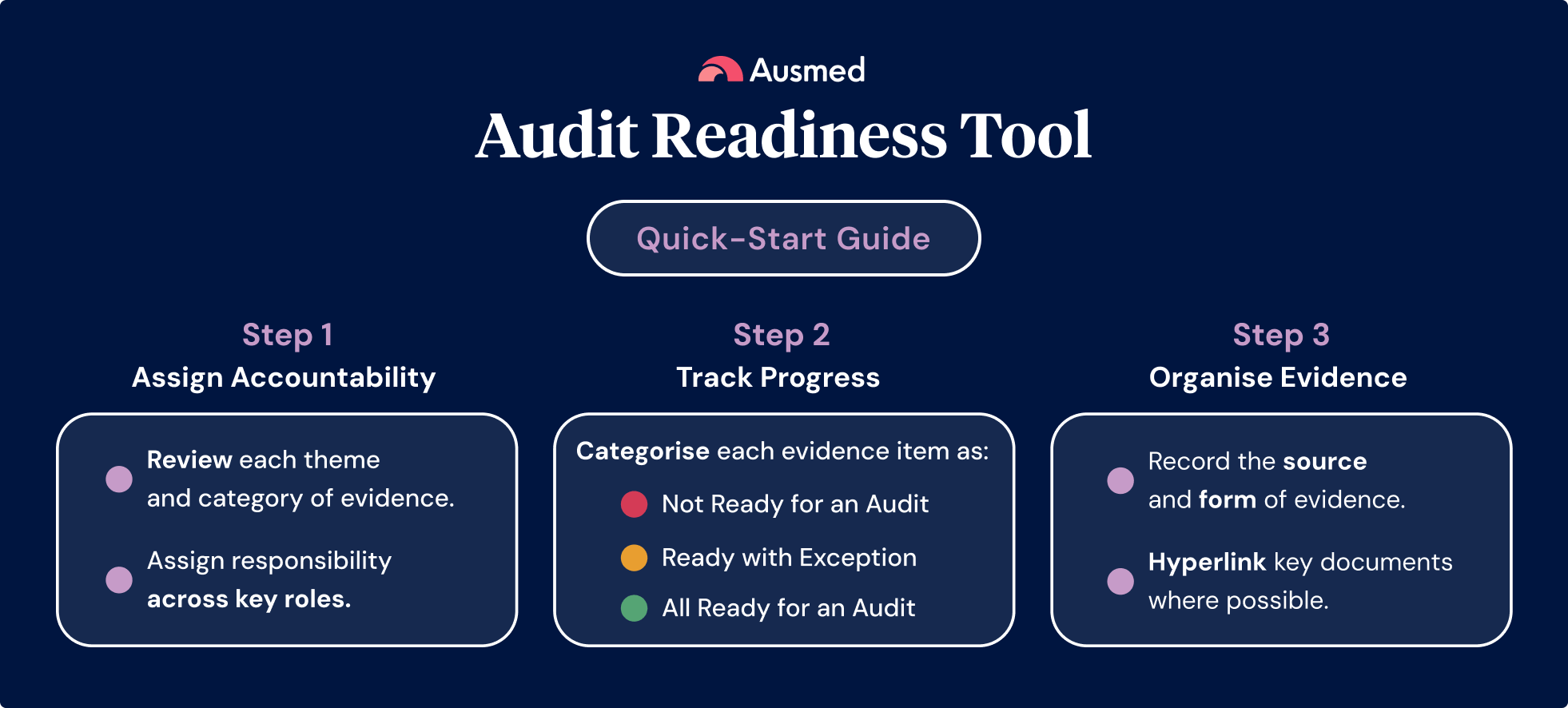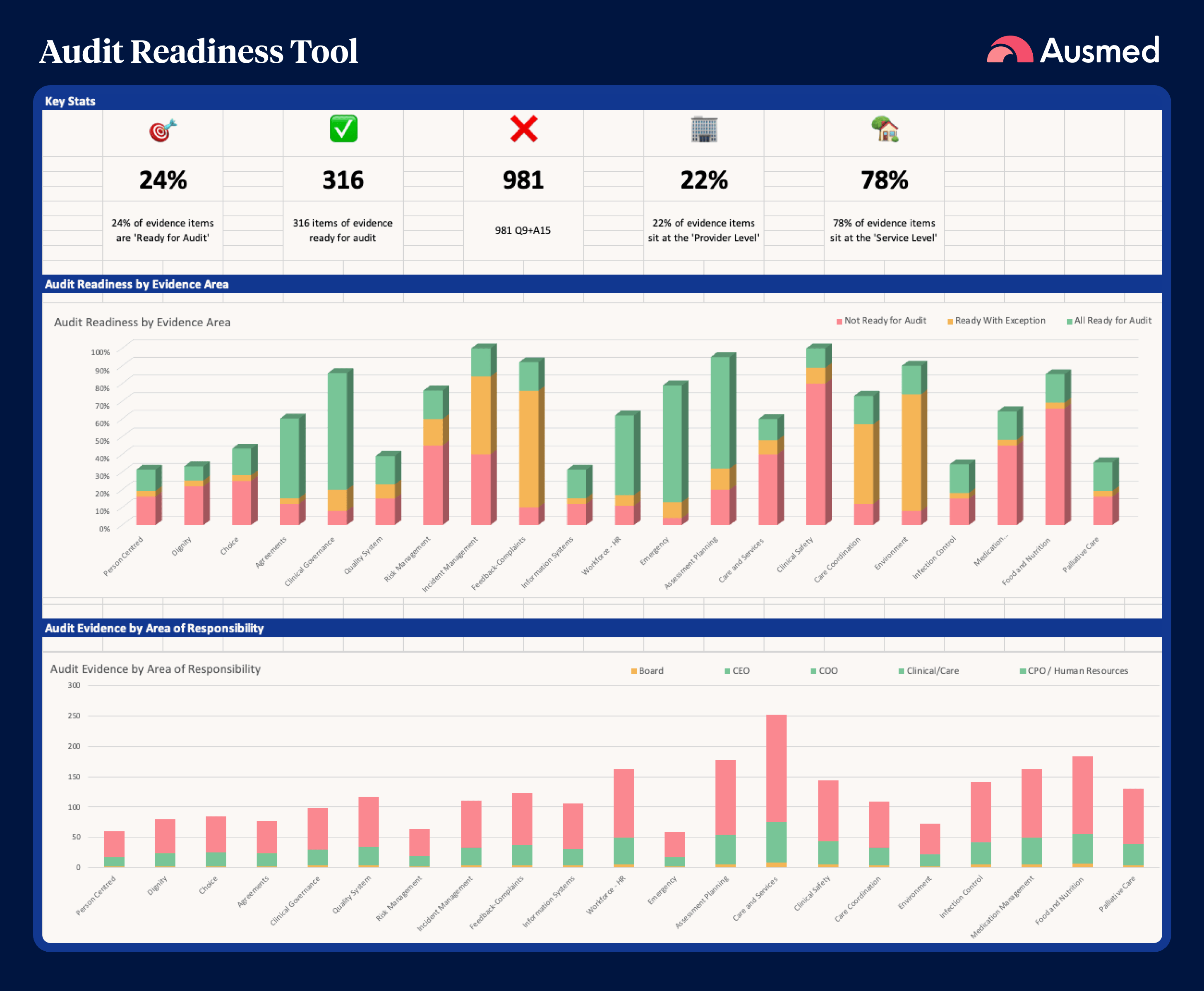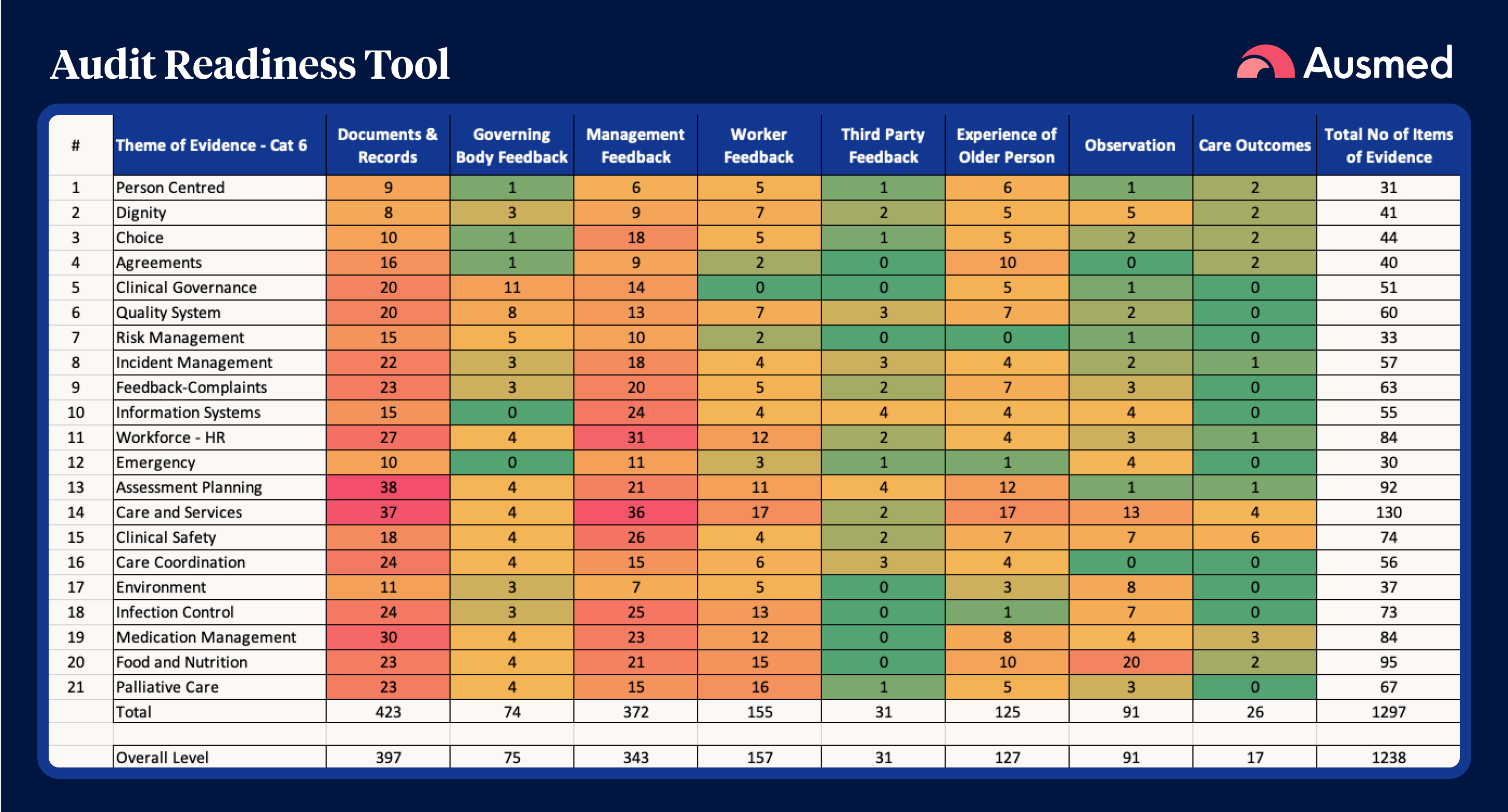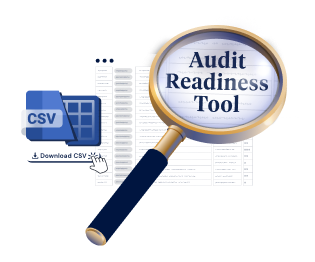Preparing for Your First Audit
The strengthened Aged Care Quality Standards introduce a more rigorous audit process. Unlike previous regulatory changes, there is no grace period. Providers must prepare now to meet these new requirements. Under the new Commissioner Liz Hefren-Webb’s leadership, audits will focus on assessing outcomes, requiring structured and evidence-based preparation.
One of the biggest challenges providers face is understanding what auditors will be looking for. With over 1,200 possible evidence items, an unstructured approach to preparation risks wasting time and resources without achieving conformance with the new grading system. The financial, reputational, and operational risks of being unprepared make early and strategic preparation essential.
Why This Tool Was Developed
Mark Sheldon-Stemm, a seasoned aged care leader, expert in the Consumer Directed Care model of care, and current CEO of Valley View Residence, developed this tool in partnership with Ausmed to make audit preparation practical and structured. As Mark said in a recent webinar on preparing for your first audit under the new Standards:
“The Aged Care Quality and Safety Commission has done an excellent job creating the evidence framework, but interpreting 750+ pages of material can be overwhelming.
This tool organises the evidence requirements into a user-friendly format, helping providers feel less overwhelmed and more confident in their ability to track and manage compliance“.
How the Audit Readiness Tool Helps Providers
This tool is designed to provide clarity and structure, ensuring providers can confidently navigate the complexities of audit preparation.
With the transition to the new standards, providers need a structured and comprehensive way to prepare for audits efficiently.
Ausmed’s Audit Readiness Tool:
- Simplifies 1,200+ evidence items into well-structured, easy-to-navigate themes.
- Groups evidence by category, making it easier to understand what’s required.
- Brings consistency to the audit process, reducing variations across assessments.
- Aligns with the new 3-phase audit process:
- Stage 1: Audit preparation and desktop review
- Stage 2: Audit delivery.
- Stage 3: Audit reporting.
- Introduces more certainly before graded assessments, which replace the binary ‘Met’ or ‘Not Met’ system, are introduced.
- Provides a clear framework for demonstrating that an organisation meets the required outcomes.
How to Use the Tool
Before diving in, we recommend watching Will Egan, CEO of Ausmed, demonstrate the tool and then work systematically through it.
Here are the key steps:
1. Assign Accountability
- Review each theme and category of evidence.
- Assign responsibility at the Provider Level (organisation-wide) and/or Service Level (individual facility).
- Define accountability across key organisational roles:
- Board
- Executive Leadership (CEO, COO, Finance, HR, Compliance, Clinical/Care, etc.)
- Facility Management Team (Managers, Clinical/Care Managers or Management Team, etc.)
2. Track Progress
- Use the Audit Readiness Score dropdown to categorise each evidence item as:
- Not Ready for an Audit
- Ready with Exception
- All Ready for an Audit
3. Organise and Store Evidence
- Record the Source of evidence, e.g., board meeting minutes, policies, and reports.
- Identify the Form of evidence, e.g., electronic records and paper documents.
- Hyperlink key documents where possible to streamline retrieval during audits.

Dashboard Overview
The tool’s dashboard provides key insights:
- Document Control
- Overall Readiness % – Percentage of evidence items marked ‘Ready for Audit’.
- Total Evidence Items Ready vs. Outstanding – To easily identify gaps or areas to strengthen.
- Breakdown of Evidence by Responsibility Level – % of evidence at Provider vs. Service level.
- Board View - % of evidence items that sit at the ‘Board Level’
- Distribution of the Number of Evidence Items by Area of Responsibility - Visual representation of how evidence items are distributed across different organisational roles and departments.

Audit Readiness by Evidence Type
Quality assurance isn’t the responsibility of one person or department. It must be shared across all teams. Clear roles and collective ownership foster a culture where continuous improvement becomes the norm.
This is the basis for a key feature of Ausmed’s Audit Readiness Tool, a heat map showing which evidence categories need attention.
This is designed to help organisations prioritise areas for improvement and ensure that quality assurance and audit preparation do not fall solely on one person or one team but remain a collective effort to make measurable improvements in the quality of care.

Evidence Collection and Categorisation
To ensure comprehensive audit preparation, evidence items are grouped into 21 key themes, as per the Evidence Mapping Framework. Each theme has a sheet within the tool.
- Person-Centred Care
- Dignity
- Choice
- Agreements
- Clinical Governance
- Quality Systems
- Risk Management
- Incident Management
- Complaints and Feedback
- Information Systems
- Workforce and HR
- Emergency Preparedness
- Assessment & Planning
- Care and Services
- Clinical Safety
- Care Coordination
- Environment
- Infection Control
- Medication Management
- Food and Nutrition
- Palliative Care
Each theme (or sheet) contains specific evidence types:
- Documents and Records
- Governing Body Feedback
- Management Feedback
- Worker Feedback
- Third-Party Feedback
- Experience of Older Persons
- Observations
- Care Outcomes
For each evidence item, the tool enables:
- Assignment of accountability (Provider or Service level).
- Designation of responsible personnel.
- Tracking of readiness status.
Example: Person-Centred Care Evidence
| Evidence Type | Example Requirement | Responsibility | Accountability | Readiness Score |
|---|---|---|---|---|
| Documents & Records | Records of governing body discussions on person-centred care improvements | Provider Level | Board & CEO | Ready with Exception |
| Worker Feedback | Can you tell me about an older person that is new to the service (last 3 months)? How did you make them feel safe and welcome? | Service Level | Clinical Manager | Not Ready for an Audit |
| Management Feedback | What strategies and practices are in place to support older people, particular new ones to the service, to feel safe, welcome, included and understood? | Service Level | Care Coordinator | All Ready for an Audit |
Get Started Now!
Thanks to the expertise and generosity of Mark Sheldon-Stemm, the Audit Readiness Tool is a free, practical, structured support designed to help you navigate the complexities of the new audit process.
By methodically using the tool, assigning accountability, and tracking progress, providers can move beyond compliance and confidently demonstrate how structures and processes lead to the desired effect of measurable improvements in the quality of care of older people.

Ensure your organisation is prepared for your first audit under the strengthened Standards.
References and Useful Resources
- Strengthened Aged Care Quality Standards - Aged Care Quality and Safety Commission
- Strengthened Quality Standards Provider Guidance - Aged Care Quality and Safety Commission
- Evidence Mapping Framework - Aged Care Quality and Safety Commission
- Guide to Preparing for Your First Audit Under the New Standards - Ausmed
- Get Audit-Ready for the Strengthened Standards - Ausmed
Disclaimer
This 'Audit Readiness Tool' has been developed to support Australian Aged Care providers to prepare for an audit under the Strengthened Aged Care Standards. This Tool is made available at no cost as a general guide and should not be relied upon as a substitute for professional advice or regulatory guidance.
The Tool offers general guidance and suggestions only and does not cover all aspects of an audit, nor does it guarantee any particular outcome.
The Tool was jointly developed by Ausmed Education Pty Ltd and Mark Sheldon-Stemm, who obtained written permission from the Aged Care Quality and Safety Commission to develop and share this tool.
While every effort has been made to ensure the accuracy and usefulness of this Tool, Ausmed Education Pty Ltd and Mark Sheldon-Stemm accept no liability for any errors, omissions, or outcomes arising from its use. Users remain responsible for ensuring their compliance with all applicable laws and regulatory requirements.
Author
Zoe Youl
Zoe Youl is a Critical Care Registered Nurse with over ten years of experience at Ausmed, currently as Head of Community. With expertise in critical care nursing, clinical governance, education and nursing professional development, she has built an in-depth understanding of the educational and regulatory needs of the Australian healthcare sector.
As the Accredited Provider Program Director (AP-PD) of the Ausmed Education Learning Centre, she maintains and applies accreditation frameworks in software and education. In 2024, Zoe lead the Ausmed Education Learning Centre to achieve Accreditation with Distinction for the fourth consecutive cycle with the American Nurses Credentialing Center’s (ANCC) Commission on Accreditation. The AELC is the only Australian provider of nursing continuing professional development to receive this prestigious recognition.
Zoe holds a Master's in Nursing Management and Leadership, and her professional interests focus on evaluating the translation of continuing professional development into practice to improve learner and healthcare consumer outcomes. From 2019-2022, Zoe provided an international perspective to the workgroup established to publish the fourth edition of Nursing Professional Development Scope & Standards of Practice. Zoe was invited to be a peer reviewer for the 6th edition of the Core Curriculum for Nursing Professional Development.



